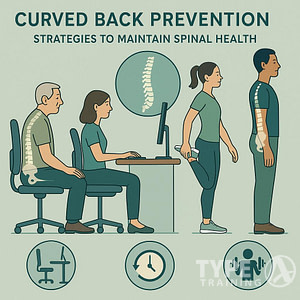Starting a running journey when overweight can be a transformative experience. Running offers many health benefits, from improving cardiovascular fitness to boosting mood and energy levels.
Your body may face unique challenges, but with proper preparation and a tailored approach, you can safely incorporate running into your routine. Start by consulting your doctor to ensure running is appropriate for your current health status. Invest in supportive
You can begin running at any weight by taking small, consistent steps and gradually building your endurance.
Popular posts:
Begin with short intervals of walking and light jogging, focusing on proper form and breathing. As you progress, slowly increase your running time and distance. Remember to listen to your body and rest when needed. Celebrate each milestone, no matter how small, to stay motivated on your running journey.
Key Takeaways
- Start with a mix of walking and jogging to build endurance gradually
- Invest in proper running gear and consult a doctor before beginning
- Set realistic goals and celebrate progress to maintain motivation
Preparing for the Journey
Starting a running journey when overweight requires some thoughtful preparation. Taking the right steps before you begin will set you up for success and help prevent injuries.
Assessing Your Health
Consult your doctor before starting any new exercise routine. They can evaluate your overall health and identify any potential risks. Your doctor may recommend a physical exam or stress test to ensure you’re ready for running.
Consider your current fitness level honestly. Can you walk briskly for 30 minutes without stopping? If not, start with walking and gradually build up to jogging.
Pay attention to any joint pain, especially in your knees, hips, or ankles. These areas will bear more stress when running. If you have concerns, ask your doctor about low-impact alternatives to start with.
Setting Achievable Goals
Begin with realistic expectations. Your initial goal might be to run for 1 minute without stopping. Gradually increase this time as you build endurance.
Create a mix of short-term and long-term goals. A short-term goal could be running three times a week. A long-term goal might be completing a 5K race in six months.
Track your progress using a running app or journal. Celebrate small victories along the way. Remember, consistency is key in achieving your weight loss and fitness goals.
Choosing the Right Gear
Invest in proper running shoes. Visit a specialty running store for a professional fitting. The right
Buy moisture-wicking running clothes. These help keep you dry and comfortable during your workouts. Look for breathable fabrics that move with your body.
For women, a supportive sports bra is essential. Choose one designed for high-impact activities to minimize discomfort.
Consider compression gear for added support. These can help reduce muscle fatigue and improve circulation during your runs.
Building a Solid Foundation
Establishing a strong base is crucial for overweight individuals starting a running journey. This involves incorporating strength training and proper warm-ups into your routine.
Strength Training Fundamentals
Strength training is essential for new runners, especially those carrying extra weight. Focus on exercises that target your legs, core, and upper body. Squats and lunges build lower body strength, improving your running form. Planks and Russian twists strengthen your core, enhancing stability.
Include upper body exercises like push-ups and rows to maintain balance. Start with bodyweight exercises, then progress to light weights. Aim for 2-3 strength sessions per week, allowing rest days between workouts.
Remember to maintain proper form during exercises to prevent injuries. If you’re unsure, consider working with a personal trainer initially.
Importance of Warm-Ups
Warm-ups prepare your body for running and reduce injury risk. Begin with 5-10 minutes of light walking to increase blood flow. Follow with dynamic stretches like leg swings and arm circles.
Include running-specific movements such as high knees and butt kicks. These mimic running motions and activate key muscle groups. Gradually increase the intensity of your warm-up to match your planned running pace.
Don’t skip cool-downs after your run. Spend 5-10 minutes walking to lower your heart rate. Finish with static stretches, holding each for 15-30 seconds to improve flexibility.
Developing Your Running Plan
A well-structured running plan is crucial for overweight beginners. It balances progression with safety, incorporates rest, and utilizes effective strategies like run/walk intervals.
Creating a Training Schedule
Start with a realistic training plan tailored to your current fitness level. The Couch to 5K program is an excellent option for beginners. It gradually increases your running time over 9 weeks.
Begin with three sessions per week, allowing rest days in between. Each workout should last about 20-30 minutes initially.
Increase your running time by 10% each week. This gradual progression helps prevent injury and builds endurance.
Consider using a running app or spreadsheet to track your progress. Seeing your improvements can boost motivation.
Incorporating Rest and Recovery
Rest days are essential for your body to adapt and strengthen. Include at least one full rest day between running sessions.
On non-running days, engage in low-impact activities like walking or swimming. These help maintain fitness without overstraining your joints.
Prioritize sleep, aiming for 7-9 hours nightly. Quality sleep aids recovery and reduces injury risk.
Listen to your body. If you feel excessively sore or fatigued, take an extra rest day.
Understanding Run/Walk Strategies
The run/walk method is ideal for overweight beginners. It alternates short running intervals with walking breaks.
Start with a 1:2 ratio – run for 30 seconds, then walk for 60 seconds. Repeat this cycle for your entire workout.
Gradually increase your running intervals and decrease walking time as your fitness improves.
Use a timer or smartphone app to track your intervals accurately.
This strategy helps build endurance while minimizing fatigue and injury risk. It also makes longer workouts feel more manageable.
Running Safely and Effectively
Starting a running routine requires careful attention to proper form and pacing. Focusing on injury prevention and managing discomfort will help you build a sustainable practice.
Techniques to Prevent Injuries
Proper running form is crucial for injury prevention. Keep your head up, shoulders relaxed, and arms at a 90-degree angle. Land midfoot rather than on your heel or toes. Take short, quick steps to reduce impact on your joints.
Warm up before each run with 5-10 minutes of brisk walking. Cool down afterwards with gentle stretches. Invest in supportive running
Increase your mileage gradually. Follow the 10% rule – don’t increase your weekly distance by more than 10% at a time. This allows your body to adapt and reduces injury risk.
Managing Joint Pain and Shin Splints
Start with a run/walk program to ease into running. For example:
- Walk 4 minutes, run 1 minute
- Repeat 5 times
- Gradually increase running time as you build endurance
If you experience joint pain, try running on softer surfaces like grass or trails. Avoid concrete when possible. Consider cross-training with low-impact activities like swimming or cycling to strengthen muscles without stressing joints.
For shin splints, ice the affected area for 15-20 minutes after running. Stretch your calves regularly. Strengthen your lower legs with exercises like heel raises and toe taps.
Avoiding Overtraining
Listen to your body and don’t push too hard. Rest is crucial for recovery and injury prevention. Take at least one full rest day per week.
Vary your workouts to prevent boredom and overuse injuries. Mix in different types of runs:
- Easy pace runs
- Interval training
- Hill workouts
Pay attention to signs of overtraining:
- Persistent fatigue
- Decreased performance
- Increased resting heart rate
- Mood changes
If you notice these symptoms, take extra rest days or reduce your training intensity. Proper nutrition and hydration are also key to avoiding burnout.
Enhancing Your Running Experience
Improving your running journey involves mental preparation, finding support, and tracking progress. These elements can significantly boost your motivation and enjoyment.
Navigating Mental Challenges
Mental health plays a crucial role in your running success. Set realistic expectations for yourself to avoid frustration. Break larger goals into smaller, achievable milestones. This approach helps build confidence and maintains motivation.
Practice positive self-talk during runs. Replace negative thoughts with encouraging ones. Remind yourself of past accomplishments and the benefits you’re gaining from running.
Visualization techniques can be powerful tools. Imagine yourself successfully completing runs or reaching goals. This mental practice can boost your confidence and performance.
Finding a Supportive Community
Joining a running group can transform your experience. Look for local clubs or online communities that welcome beginners and runners of all sizes.
These groups offer valuable support, advice, and accountability. You’ll meet others with similar goals and challenges, creating a sense of belonging.
Participate in group runs or virtual challenges. These activities provide structure and encouragement. They also offer opportunities to learn from more experienced runners.
Consider finding a running buddy. Having a partner can make runs more enjoyable and help you stick to your schedule.
Evaluating Progress and Staying Motivated
Track your runs using a smartphone app or fitness watch. These tools help you see improvements in distance, speed, and consistency over time.
Set specific, measurable running goals. Examples include completing a 5K or running for 30 minutes without stopping. Celebrate each milestone you achieve.
Take progress photos or measurements beyond the scale. Changes in how your clothes fit or improvements in everyday activities can be motivating indicators of success.
Challenge yourself with variety. Try new routes, incorporate intervals, or sign up for a fun run. These changes keep your routine fresh and exciting.
Remember that progress isn’t always linear. Some days will feel easier than others. Focus on consistency and long-term improvement rather than day-to-day fluctuations.
Advanced Running Considerations
As you progress in your running journey, focusing on nutrition, technique, and endurance becomes crucial for continued success and weight loss. These elements work together to enhance your performance and results.
Optimizing Nutrition for Runners
Proper nutrition fuels your runs and aids recovery. Aim for a balanced diet rich in complex carbohydrates, lean proteins, and healthy fats.
Eat a light meal 2-3 hours before running to provide energy without discomfort. Choose easily digestible foods like bananas, oatmeal, or whole grain toast with peanut butter.
Stay hydrated by drinking water throughout the day and during longer runs. For runs lasting over an hour, consider sports drinks to replenish electrolytes.
Post-run, consume a mix of carbs and protein within 30 minutes to support muscle recovery. Greek yogurt with berries or a smoothie can be excellent options.
Adjusting Technique for Weight Loss
Refining your running form can boost efficiency and calorie burn. Focus on maintaining a slight forward lean from your ankles, not your waist.
Keep your arms relaxed and bent at about 90 degrees, swinging them forward and back, not across your body. This helps maintain balance and conserve energy.
Land mid-foot rather than on your heel or toes to reduce impact and improve speed. Aim for a cadence of 170-180 steps per minute to increase efficiency and reduce injury risk.
Incorporate interval training to maximize fat loss. Alternate between 1 minute of high-intensity running and 2 minutes of recovery jogging or walking.
Increasing Endurance and Speed
Gradually increase your weekly mileage by no more than 10% to build endurance safely. Mix up your routine with different types of runs:
- Long, slow runs to build aerobic capacity
- Tempo runs at a “comfortably hard” pace to improve lactate threshold
- Hill repeats to build strength and power
Include strength training 2-3 times a week to develop muscle, improve running economy, and boost metabolism. Focus on exercises like squats, lunges, and planks.
Try fartlek training, alternating between fast and slow paces during a run. This improves both speed and endurance while keeping workouts interesting.
Watching for Results
Tracking your progress and celebrating achievements are key parts of your running journey. These practices help maintain motivation and highlight the positive changes you’re experiencing.
Tracking Fitness Improvements
Start by establishing baseline measurements. Record your initial weight, resting heart rate, and time to walk or jog a specific distance. Use a fitness tracker or smartphone app to log your runs and monitor improvements.
Pay attention to how you feel during and after runs. You might notice:
- Breathing becomes easier
- Recovery time shortens
- Able to run longer distances
- Increased energy throughout the day
Regular gait analysis can reveal improvements in your running form. Consider having this done every few months at a specialty running store.
Celebrating Milestones
Set small, achievable goals and reward yourself when you reach them. Examples include:
- Running for 5 minutes without stopping
- Completing your first 5K
- Losing 5 pounds
Create a visual representation of your progress, like a chart or calendar. Mark each day you run or workout.
Share your accomplishments with friends or join online running communities. Their support can boost your motivation.
Remember, non-scale victories are just as important. Celebrate fitting into old clothes or feeling more confident in your body.
Frequently Asked Questions
Starting a running routine when overweight requires careful consideration of safety, risks, and proper techniques. These common questions address key concerns for beginners.
What is a safe running plan for a beginner who is overweight?
Start with a walk-run program. Alternate 1 minute of jogging with 2 minutes of walking for 20-30 minutes total. Do this 3 times a week, gradually increasing jogging time as you build endurance.
Rest between sessions to allow your body to recover. Listen to your body and adjust the intensity if needed.
Are there any specific risks for overweight individuals starting a running program?
Overweight runners face a higher risk of joint stress, especially in the knees and ankles. They may also experience increased fatigue and shortness of breath.
Proper footwear and a gradual approach can help mitigate these risks. Always consult a doctor before starting any new exercise program.
What preparations or precautions should an overweight person consider before beginning to run?
Invest in supportive running
Start with walking if running feels too intense. Stay hydrated and wear moisture-wicking clothes to prevent chafing.
How can someone who is overweight build their running endurance?
Consistency is key. Stick to your running schedule, even if you’re only able to run for short periods.
Gradually increase your running time each week. Cross-train with low-impact activities like swimming or cycling to improve overall fitness.
How does one manage knee pain when starting to run with excess weight?
Strengthen the muscles around your knees through exercises like squats and leg lifts. Run on softer surfaces like grass or trails when possible.
Consider using knee supports or compression sleeves. If pain persists, consult a physical therapist or sports medicine doctor.
What should be the frequency and duration of running sessions for beginners with obesity?
Aim for 3-4 sessions per week, lasting 20-30 minutes each. This frequency allows for adequate recovery time between runs.
As your fitness improves, gradually increase session duration. Don’t rush progress. Slow and steady improvements are more sustainable.














